


 |
 |
 |



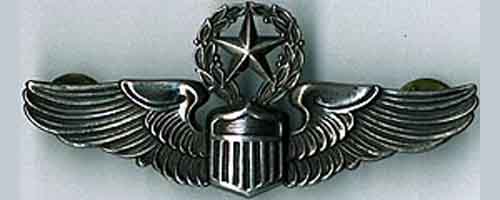

L to R
Col. Doug Nelson, Col. Ray Haupt, Col. John Boynton, Col. Bill Hayes
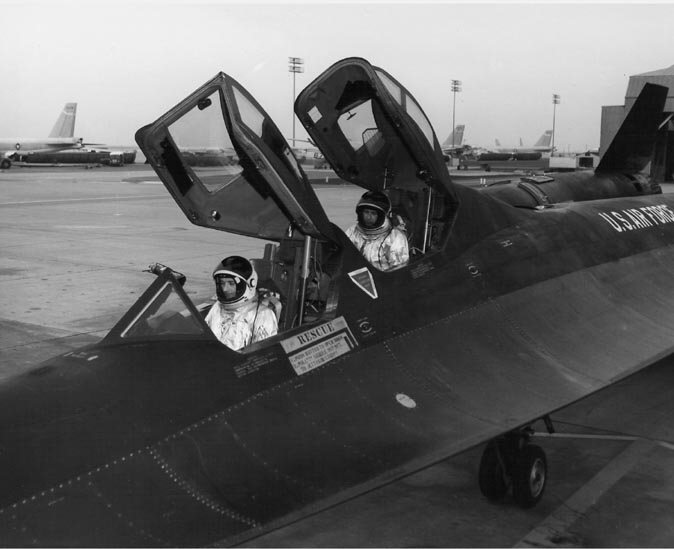
Col. Nelson and Col. Ray Haupt
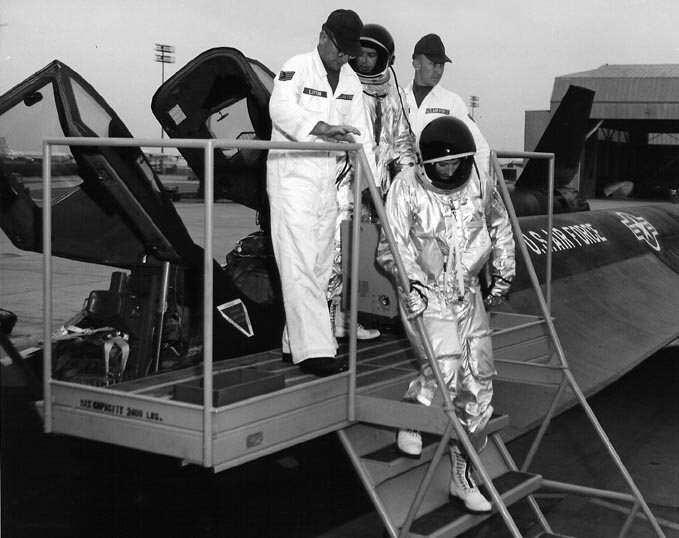
Col. Nelson and Col. Haupt
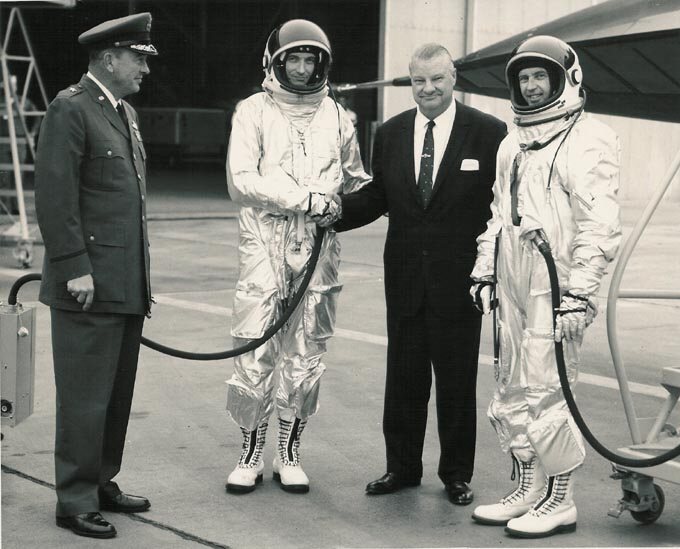
L-R: Gen. Deportes, Gen Nelson, Kelly Johnson, and Col. Haupt
Photo donated by Colleen Pryor and grandson Brad Poppell

First SR-71 at Beale AFB

Col. Ray Haupt (left) and Col. Russell Lewis standing in front of the SR-71 Blackbird they delivered to Beale AFB in January 1966
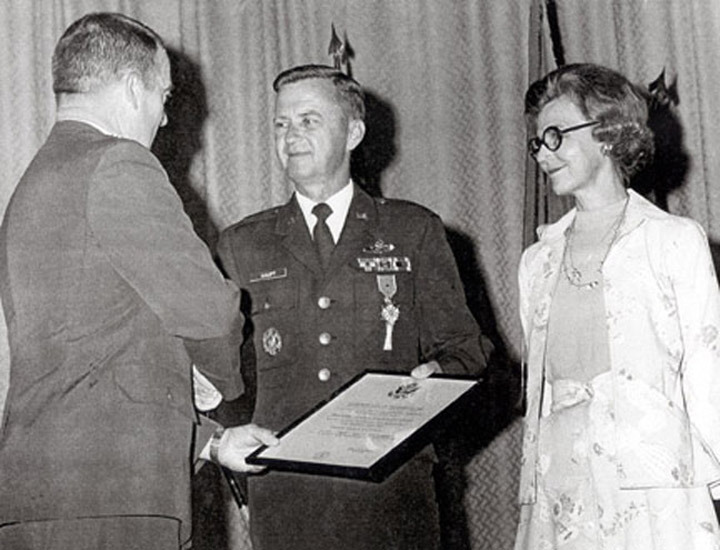
Brig. Gen. Raymond Haupt and wife, Mary
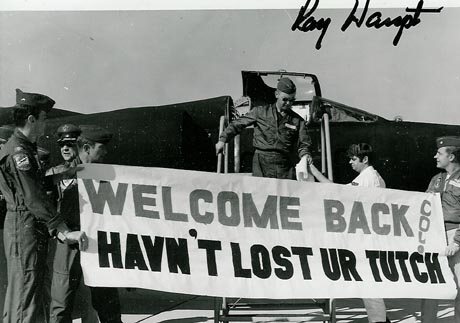
Ray Haupt dismounting from his first ride in the C model U-2. He had taken command of the 100th Wing in 1970 after a nine year lay off for the Blackbird program.
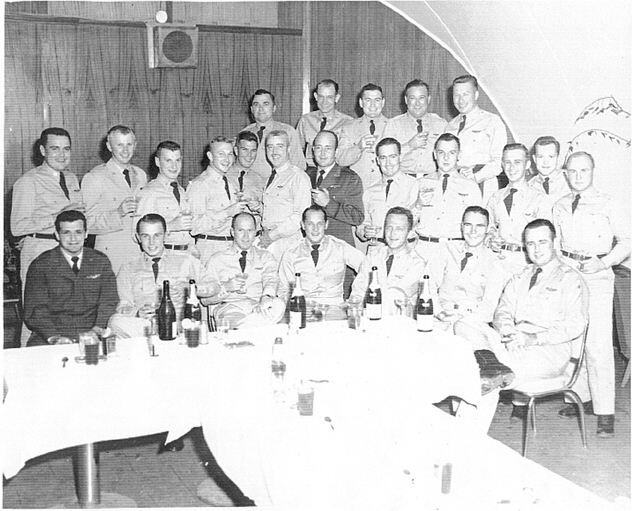
While at Groom Lake, I handled standardization for, and IP'd in,
the A-12 Titanium Goose, F-101. T-33, and U-3B. Which meant a lot of good flying
time and an abundance of paperwork. Burgie was another working IP in the F-101,
and additionally the IP who checked out Col Nelson and me at Shaw during
February 1962. I returned the favor and checked him out in the Titanium Goose in
March/April 1965. Bill Skliar also was an IP in the Goose, checking me out in
February 1963. Before leaving Groom, I flew the J-58 engined Article on a night
air refueling test flight.
Fred White, and I did the spade work in converting the Factory Ozalid version of
the of the A-12 series aircraft to the Air Force Standard Flight Manual with
inputs from both the Lockheed pilots and Project pilots. Coincidentally we did
the Flight Manual for the SR-71. Straight to the Air Force Standard, skipping
the obligatory Ozalid process shortcut. This saved lots of time when we started
operations at Beale, all we had to do was make minor modifications in the Combat
Crew Training Syllabus to incorporate the availability of a simulator and
changes in the Navigation System. We developed the RSO training plan and brought
him into the two man crew
I credit Doug Nelson for doing more to get the program off the ground and
running than anyone else in the program. He was key in seeing the project pilots
were protected, the promotion of project pilots to General Officer status except
for his work could have been poisoned by their service.
Ray
![]()
BRIGADIER GENERAL RAYMOND L. HAUPT
He retired from the United States Air Force on November 30, 1975.
Brigadier General Raymond Leon Haupt was Commander of the Twelfth Air Division (SAC), with headquarters at Davis-Monthan Air Force Base, Ariz.
General Haupt was born in 1927, in Millersville, Mo., and graduated from Oak Ridge High School, Oak Ridge, Mo., in 1944. He attended Southeast Missouri State College in Cape Girardeau, Mo., before he enlisted in the U.S. Army Air Corps on Nov. 9, 1945.
General Haupt returned from Europe, on December 24, 1947, where he had served as a Staff Sergeant supervisor of an Air Force Communications Service drafting section in Bremen Germany, to Hamilton AFB, California. He ended his three years enlisted service when he entered the aviation cadet program in October 1948 and received his commission and pilot wings at Williams Air Force Base, Ariz., in September 1949.
He next served at Turner Air Force Base, Ga., as a jet fighter pilot with the 307th Fighter Escort Squadron and became an air operations officer for the 508th Strategic Fighter Wing. He completed the Squadron Officer School at Maxwell Air Force Base, Ala., in 1951.
General Haupt began his association with the Strategic Air Command's reconnaissance program in May 1957 when he was assigned to the 4028th Strategic Reconnaissance Squadron (redesignated as the 349th Strategic Reconnaissance Squadron) at Laughlin Air Force Base, Del Rio, Texas. He served there as a flight commander and chief of the squadron's standardization division and earned his first Distinguished Flying Cross while assigned to the 4028th Squadron. The citation accompanying the award states that his Lockheed U-2 reconnaissance aircraft experienced severe mechanical difficulties during a routine high altitude test flight. "After all attempts to remedy the situation failed, he contacted his home station and declared his intention to execute a flameout landing." Following prescribed emergency procedures, he successfully executed an emergency landing.
General Haupt earned his second Distinguished Flying Cross in his next assignment as Chief, Operational Evaluation Division, Detachment 1, 1129th U.S. Air Force Special Activities Squadron at Las Vegas, Nev. From November 1961 through May 1965, he participated in aerial test flights in the reconnaissance aircraft. His citation states: "The operational techniques and procedures he helped to develop, which resulted from knowledge gained during his flights, contributed to his unit reaching an operational readiness status and in providing safe operational instructions for succeeding Air Force units."
In August 1965 General Haupt was transferred to Beale Air Force Base, Calif. He served as Chief of the Standardization Division, 4200th Strategic Reconnaissance Wing, and later was Commander of the 4201st Strategic Reconnaissance Squadron (redesignated as the 1st Strategic Reconnaissance Squadron). The squadron flew SR-71s.
In June 1967 General Haupt moved to Headquarters Strategic Air Command, at Offutt Air Force Base, Neb., and served in the office of the Deputy Chief of Staff for Operations as Chief of the Reconnaissance Special Operations Division and later became Deputy Director of the Strategic Reconnaissance Center. He attended the National War College at Fort McNair, Washington, D.C., from September 1969 to June 1970.
He then was named Vice Commander of the 100th Strategic Reconnaissance Wing and took command of the organization in July 1970. He was transferred to the Organization of the Joint Chiefs of Staff as Deputy Director for Operations (Reconnaissance) in July 1972.
General Haupt assumed command of the Twelfth Air Division (SAC), with headquarters at Davis-Monthan Air Force Base, Ariz., in October 1973.
In addition to his two Distinguished Flying Crosses, his military decorations and awards include the Legion of Merit, the Air Medal with two oak leaf clusters, Air Force Commendation Medal with oak leaf cluster, and the Air Force Outstanding Unit Award Ribbon with two oak leaf clusters. He is a command pilot with more than 5,500 flying hours.
General Haupt's hometown is Millersville, Mo.
He was promoted to the grade of brigadier general effective Aug. 1, 1972, with date of rank July 24, 1972.
General Haupt is one of the few and perhaps the only pilot to have flown the U-2, the CIA's A-12 Trainer at Area 51, and the Air Force's SR-71. The Roadrunners remember while at Groom Lake, Haupt handled standardization for, and IP'd in, the A-12 Titanium Goose, F-101. T-33, and U-3B. Which he always claimed to mean a lot of good flying time and an abundance of paperwork. Before leaving Groom Lake, he flew the J-58 engined Article on a night air refueling test flight.
Roadrunner Fred White and he did the spadework in converting the Factory Ozalid version of the A-12 series aircraft to the Air Force Standard Flight Manual with inputs from both the Lockheed pilots and Project pilots. Coincidentally they did the Flight Manual for the SR-71. Straight to the Air Force Standard, skipping the obligatory Ozalid process shortcut. This saved lots of time when they started operations at Beale, all the Air Force had to do was make minor modifications in the Combat Crew Training Syllabus to incorporate the availability of a simulator and changes in the Navigation System. They developed the RSO training plan and brought him into the two-man crew.
Haupt always credited (MGen) Doug Nelson for doing more to get the program off the ground and running than anyone else in the program. He considered Nelson vital in seeing the project pilots were protected, the promotion of project pilots to General Officer status except for his work could have been poisoned by their service. That may be true, but Ray Haupt fit the same mold. I recall visiting with General Hault shortly after I assumed presidency of the Roadrunners and him saying to me, "TD, don't forget the enlisted men."
BGen "Ray" Haupt retired from the United States Air Force on November 30, 1975.
Brigadier General Raymond Leon Haupt was Commander of the Twelfth Air Division (SAC), with headquarters at Davis-Monthan Air Force Base, Ariz.
General Haupt was born in 1927, in Millersville, Mo., and graduated from Oak Ridge High School, Oak Ridge, Mo., in 1944. He attended Southeast Missouri State College in Cape Girardeau, Mo., before he enlisted in the U.S. Army Air Corps on Nov. 9, 1945.
General Haupt returned from Europe, on December 24, 1947, where he had served as a Staff Sergeant supervisor of an Air Force Communications Service drafting section in Bremen Germany, to Hamilton AFB, California. He ended his three years enlisted service when he entered the aviation cadet program in October 1948 and received his commission and pilot wings at Williams Air Force Base, Ariz., in September 1949.
He next served at Turner Air Force Base, Ga., as a jet fighter pilot with the 307th Fighter Escort Squadron and became an air operations officer for the 508th Strategic Fighter Wing. He completed the Squadron Officer School at Maxwell Air Force Base, Ala., in 1951.
General Haupt began his association with the Strategic Air Command's reconnaissance program in May 1957 when he was assigned to the 4028th Strategic Reconnaissance Squadron (redesignated as the 349th Strategic Reconnaissance Squadron) at Laughlin Air Force Base, Del Rio, Texas. He served there as a flight commander and chief of the squadron's standardization division and earned his first Distinguished Flying Cross while assigned to the 4028th Squadron. The citation accompanying the award states that his Lockheed U-2 reconnaissance aircraft experienced severe mechanical difficulties during a routine high altitude test flight. "After all attempts to remedy the situation failed, he contacted his home station and declared his intention to execute a flameout landing." Following prescribed emergency procedures, he successfully executed an emergency landing.
General Haupt earned his second Distinguished Flying Cross in his next assignment as Chief, Operational Evaluation Division, Detachment 1, 1129th U.S. Air Force Special Activities Squadron at Las Vegas, Nev. From November 1961 through May 1965, he participated in aerial test flights in the reconnaissance aircraft. His citation states: "The operational techniques and procedures he helped to develop, which resulted from knowledge gained during his flights, contributed to his unit reaching an operational readiness status and in providing safe operational instructions for succeeding Air Force units."
In August 1965 General Haupt was transferred to Beale Air Force Base, Calif. He served as Chief of the Standardization Division, 4200th Strategic Reconnaissance Wing, and later was Commander of the 4201st Strategic Reconnaissance Squadron (redesignated as the 1st Strategic Reconnaissance Squadron). The squadron flew SR-71s.
In June 1967 General Haupt moved to Headquarters Strategic Air Command, at Offutt Air Force Base, Neb., and served in the office of the Deputy Chief of Staff for Operations as Chief of the Reconnaissance Special Operations Division and later became Deputy Director of the Strategic Reconnaissance Center. He attended the National War College at Fort McNair, Washington, D.C., from September 1969 to June 1970.
He then was named Vice Commander of the 100th Strategic Reconnaissance Wing and took command of the organization in July 1970. He was transferred to the Organization of the Joint Chiefs of Staff as Deputy Director for Operations (Reconnaissance) in July 1972.
General Haupt assumed command of the Twelfth Air Division (SAC), with headquarters at Davis-Monthan Air Force Base, Ariz., in October 1973.
In addition to his two Distinguished Flying Crosses, his military decorations and awards include the Legion of Merit, the Air Medal with two oak leaf clusters, Air Force Commendation Medal with oak leaf cluster, and the Air Force Outstanding Unit Award Ribbon with two oak leaf clusters. He is a command pilot with more than 5,500 flying hours.
General Haupt's hometown is Millersville, Mo.
He was promoted to the grade of brigadier general effective Aug. 1, 1972, with date of rank July 24, 1972.
 |
 |
 |